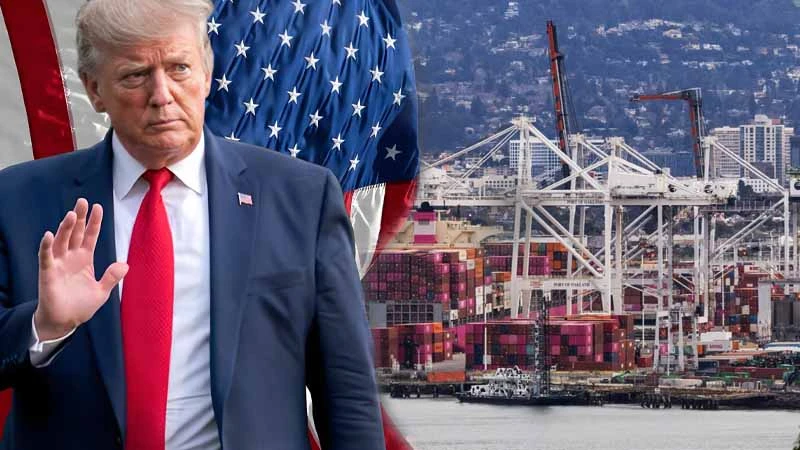Prospects of the Hong Kong Dollar Linked Exchange Rate System: USD Volatility and Market Response Strategies
As the core mechanism of Asia’s financial hub, the Hong Kong Linked Exchange Rate System has been a focal point of international capital markets since its establishment in 1983. With the intensification of global monetary policy divergence and the reshaping of the geo-economic landscape, the tight peg between the Hong Kong dollar and the USD is facing unprecedented challenges. This article will explore the historical evolution of the Hong Kong dollar’s peg to the USD, analyze the structural challenges posed by the current strong USD cycle, and provide investors with a practical operational framework to seize opportunities in a complex exchange rate environment.
Historical Resilience and Modern Challenges of the Linked Exchange Rate System
Since the implementation of the linked exchange rate system in 1983, the Hong Kong dollar has been tightly pegged to the US dollar at a fixed rate of 7.80:1. This mechanism successfully withstood the shocks of the 1998 Asian financial crisis and the 2008 global financial tsunami. According to the latest data from the Hong Kong Monetary Authority, as of the first quarter of 2024, the foreign exchange reserves stood at US$457.3 billion, with a coverage ratio of 1.7 times the monetary base, demonstrating the robustness of the system’s design.
The Dual Transmission Effect of a Strong US Dollar Cycle
The current global monetary policy environment is intensifying the inherent contradictions of the Linked Exchange Rate System. The Federal Reserve’s aggressive rate-hike cycle from 2022 pushed the US Dollar Index (DXY) to a twenty-year high of 114.78 in Q3 2023. While a strong US dollar reinforces the stability of the Hong Kong dollar exchange rate, it simultaneously generates three structural impacts.
Structural Reshaping of Trade Competitiveness
The Linked Exchange Rate System amplifies the transmission efficiency of US dollar fluctuations to the real economy. Data from 2023 shows that Hong Kong’s re-export trade volume declined by 18% year-on-year, with machinery and electronic products recording the most significant drop. This phenomenon presents a stark contrast to Singapore – during the same period, Singapore’s non-oil domestic exports fell by only 6%, as its managed floating exchange rate system effectively cushioned the impact of US dollar appreciation.
Dynamic Balance Challenge of Capital Flows
The increased attractiveness of US dollar assets has accelerated international capital flows back to the US. In Q1 2024, the total balance of Hong Kong’s banking system fell to HKD 46.3 billion, the lowest level since 2019. Notably, the real estate market showed a divergent trend during this process: the luxury housing price index rose by 5% against the trend, while prices of small- and medium-sized residential units remained flat, reflecting the differentiated impact of capital flows on various asset classes.
Substantial Surrender of Monetary Policy Autonomy
To maintain exchange rate stability, Hong Kong has been forced to follow the Federal Reserve’s rate hike cycle. In March 2024, Hong Kong’s Prime Lending Rate (P-rate) rose to 6.25%, marking its highest level since 2007. While this move helped curb inflationary pressures, it simultaneously pushed up corporate financing costs, with the loan default rate among small and medium-sized enterprises increasing by 1.8 percentage points compared to 2021.
Exploring Feasible Paths for Institutional Reform
Faced with multiple pressures, academia and market institutions are actively exploring institutional reform through multidimensional discussions. Among these, a gradual “dual-track system” has gained broader consensus: maintaining the current US dollar peg while introducing a currency basket adjustment mechanism. Based on the International Monetary Fund’s Special Drawing Rights (SDR) composition framework, theoretical models suggest that such an approach could reduce exchange rate volatility by as much as 30%.
Potential Currency Basket Weighting Design
| Currency Composition | Initial Weight | Basis for Dynamic Adjustment |
| US Dollar |
50% |
Annual change rate of China-US trade volume |
| Renminbi | 25% | Proportion of cross-border RMB settlement |
| Euro | 15% | Scale of EU direct investment in Hong Kong |
| Other Currencies | 10% | Annual economic impact assessment |
Such a mechanism can preserve the stability of the current system while gradually enhancing exchange rate flexibility. Empirical research by the Monetary Authority of Singapore shows that a similar design can narrow the fluctuation range of the real effective exchange rate by 40% while maintaining an average annual growth of 2.3% in the export competitiveness index.
Systematic Construction of Investment Strategies
In an environment where expectations of institutional reform coexist with increasing market volatility, professional investors need to establish a multi-layered risk management framework
Strategic Use of Exchange Rate Hedging Instruments
Forward foreign exchange contracts and currency options have become the preferred tools for hedging. Based on 2024 market data, the 3-month HKD forward discount widened to 120 basis points, marking the largest discount since 2016. By locking in such exchange rate differentials, companies can control import cost fluctuations within 2%.
Dynamic Balance of Cross-Market Asset Allocation
The following benchmark allocation model is recommended:
| Asset Class | Allocation Ratio | Functional Positioning |
| US Dollar Money Market Funds | 45% | Liquidity management and exchange rate anchoring |
| Offshore Renminbi Bonds | 25% | Capturing currency basket adjustment premiums |
| Hong Kong REITs | 20% | Hedging local inflation risk |
| Gold Futures | 10% | Extreme market hedging instrument |
The model performed excellently in stress tests conducted between 2022-2024. Compared with traditional stock-bond portfolios, its maximum drawdown decreased by 5 percentage points, and its Sharpe ratio improved by 0.8.
Adaptive Evolution of Regulatory Policies
The recent launch of the “Financial Market Resilience Enhancement Program” by the Hong Kong Monetary Authority marks the proactive evolution of the regulatory framework. Core measures include raising the liquidity coverage ratio requirement to 110%, establishing a HKD 200 billion foreign exchange stabilization fund, and implementing dual exchange rate stress tests for the banking industry. Although these policies may increase compliance costs for institutions in the short term, they are expected to help build a multi-layered risk buffer system in the long run.
Investors should closely monitor changes in the interest rate spread between Hong Kong Interbank Offered Rate (HIBOR) and the US London Interbank Offered Rate (LIBOR). When the spread consistently exceeds 150 basis points, it often signals a structural change in market liquidity, requiring a reassessment of the rationality of foreign exchange exposure positions.
Forward-Looking Trends and Strategic Responses
According to research reports from Bloomberg and Morgan Stanley, there is still a 75% probability that the linked exchange rate system will remain unchanged over the next three years. However, the pressure for reform will increase with the changes in two key indicators: if the US Dollar Index surpasses 120 and remains above that level for more than six months, or if the cross-border RMB settlement ratio in the Greater Bay Area exceeds 40%, the likelihood of system adjustments will rise significantly.
Against this backdrop, the following “three-phase response mechanism” is recommended:
- Normal Phase: Maintain 45% USD asset allocation, focusing on monitoring the HIBOR-LIBOR spread
- Alert Phase: Initiate rolling hedging of forward contracts when the spread exceeds 100 basis points
- Contingency Phase: Gradually increase offshore RMB bond holdings to 30% if the RMB settlement ratio reaches 35%
It is worth noting that the integration of virtual assets and traditional finance is creating new hedging tools. For instance, licensed exchanges have launched “stablecoin interest rate swap” products, which combine HKD exchange rate risk management with DeFi yields. Such financial technology applications may reshape the future paradigm of exchange rate management.
Summary: Finding Certainty Amid Change
The linked exchange rate system is not only the cornerstone of Hong Kong’s status as an international financial center but also a systemic variable that market participants must consider. Faced with cyclical fluctuations of the US dollar and the evolving regional currency landscape, policymakers need to seek a dynamic balance between system stability and economic flexibility. For investors, constructing a multi-dimensional strategy that includes exchange rate buffering mechanisms, derivative instrument combinations, and cross-border capital monitoring will be key to navigating market uncertainties.
Frequently Asked Questions
Q1. What is a linked exchange rate?
A linked exchange rate is a monetary policy mechanism that pegs the local currency to a specific foreign currency (usually the US dollar) at a fixed exchange rate, maintaining currency stability through institutional design. Its core lies in ensuring exchange rate fluctuations remain within a very narrow range via foreign exchange reserves and automatic adjustment mechanisms (such as interest rate adjustments), thereby reducing exchange rate risks for trade and investment.
Q2. What is the Hong Kong dollar linked exchange rate system?
The linked exchange rate system implemented in Hong Kong since 1983 is a model of the currency board system, mainly operating through:
- US dollar reserve backing: Note-issuing banks must submit an equivalent amount of US dollars to the HKMA at an exchange rate of 1 USD to 7.80 HKD to issue Hong Kong dollar banknotes.
- Two-way convertibility guarantee: The HKMA commits to buying and selling US dollars without limit within the exchange rate range of 7.75 (strong side) and 7.85 (weak side), maintaining stability through interest rate adjustments.
- Foreign exchange reserve buffer: Hong Kong’s foreign exchange reserves reached 427.3 billion USD (June 2024), 1.7 times the monetary base, far exceeding international safety standards.
Q3. What are the advantages and disadvantages of the linked exchange rate system?
Advantages
- Exchange rate stability: Enterprises and investors do not bear exchange rate fluctuation risks, reducing cross-border transaction costs.
- Free capital flow: The free convertibility of the Hong Kong dollar attracts international capital, with cross-border capital inflows reaching 6.8 trillion HKD in 2023.
- Inflation control: Pegging to the US dollar helps curb imported inflation, with Hong Kong’s CPI growth long remaining below major economies.
Disadvantages
- Limited policy autonomy: Hong Kong must passively follow the US Federal Reserve’s interest rate decisions, making it difficult to adjust its economic cycle independently.
- Arbitrage impact: When the Hong Kong-US interest rate spread widens, capital outflows can occur (such as the 320 billion HKD outflow in 2023).
- Economic structural contradictions: When the US dollar strengthens, the HKD’s appreciation may weaken export competitiveness.
| Level | Specific Impact | Case Data |
| Interest Rate Following | Hong Kong’s prime rate lags behind the US by 1.5–2% | Hong Kong mortgage rate at 3.5% in 2023 vs US at 5.0% |
| Foreign Exchange Reserves | Coverage ratio reaches 170%, far exceeding IMF recommendations | Foreign exchange reserves at 427.3 billion USD in 2024 |
| Capital Flow | Maximum single-day intervention scale reached 23.1 billion HKD (1998) | Data from the Asian Financial Crisis period |
Related articles
-
Since 2025, global financial markets have continued to focus on the monetary policy trends of the US Federal Reserve (Fed) and movements in the US Dollar Index. As a barometer of the international market, the performance of the US Dollar Index (DXY) directly affects asset prices and capital flows in...2025 年 3 月 18 日
-
2024 Q4 US Nasdaq Index plunged 3.6%, while the Hang Seng Tech Index fell 4.2% simultaneously, highlighting that the linkage between the two markets has deepened to the level of capital flows. Facing the Federal Reserve’s policy swings, the tech industry’s cyclical shifts, and rising geopolitical risks, Hong Kong stocks...2025 年 2 月 21 日
-
In February 2025, Donald Trump's 25% tariff on imported cars triggered an instant earthquake in the global supply chain. This trade policy, which has been labelled “America First 2.0", has not only forced multinational car companies to urgently reorganise production, it has also pushed the price of precious metals past...2025 年 2 月 21 日













